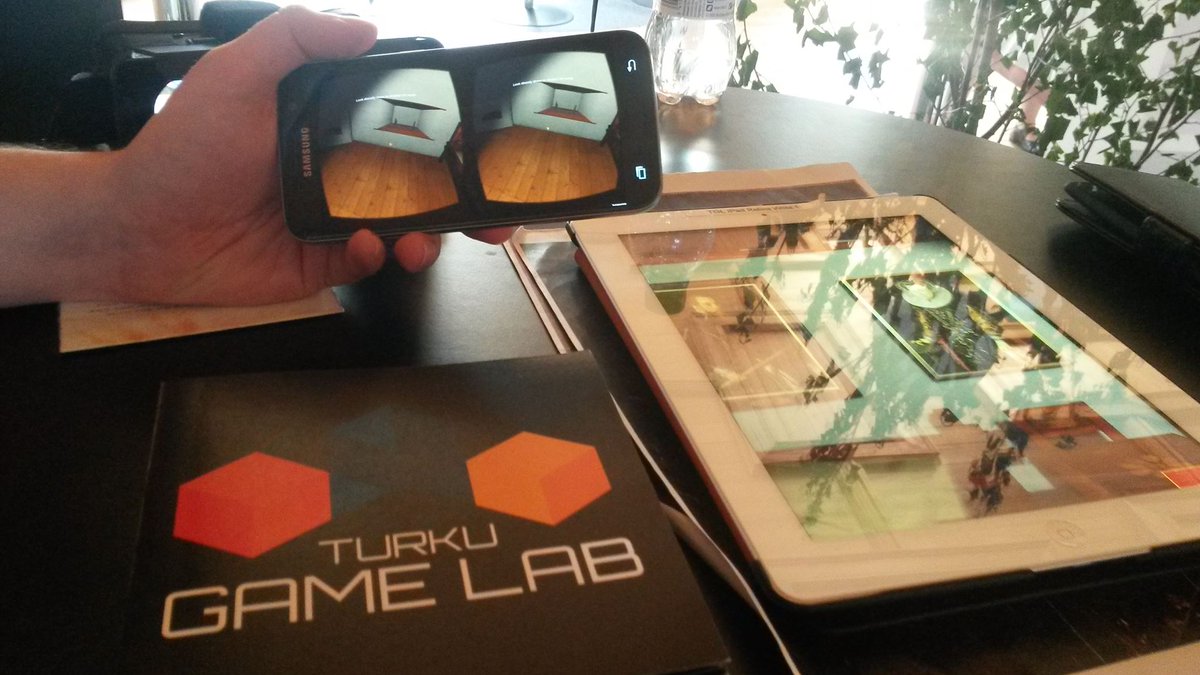The virtual reality insights from SHIFT 2016
The man looks up the metal ladder that looks unreliable. He reaches out for the next rung, as high as he couldn’t go in real life — but here it works, and the man skips every three or four rungs. In the middle of his way, he takes his time to look around — and enjoys the view over magnificent mountain Everest range.
There’s a dozen of spectators one-two meter away from the man discussing his movements, but he doesn’t seem to notice them. Instead, he waives at other virtual climbers accompanying him in the mountains. The man is not an addicted gamer who overdid it the night before the festival. He is a visitor of The SHIFT 2016 festival who took a break from panel sessions and round tables and went down to a Turku castle cellar to check out one of virtual reality stands.
The stand is provided by the Icelandic studio Solfar that’s going to release its new product, Everest climb simulation, in 2016. The demonstration is held in the cellar which is quite cool — despite the fact it’s 26°C outside the castle. At SHIFT 2016, the creator of the simulation gave a speech about how virtual reality is created. According to Thor Gunnarsson, a co-founder of Solfar, engaging senses other than sight, such as hearing and touch, is crucial.
Once a woman who experienced the Everest demonstration insisted on taking off her high heels. The demonstration venue floor was good enough for wearing heels, but for that woman it were the snowy rocks that were real.
Another guy said he was wearing blue boots when climbing. Solfar people mumbled that there were no boots in the simulation (when a user looks down, he only sees the snow), but the guy insisted that the boots were there. That cold castle cellar turned out to be appropriate for the simulation — it’s permanent winter on Everest summit.
“It’s important to engage people’s imagination to fill in the gaps in the virtual reality,” Thor said.
When talking about how Everest was created, Thor mentioned that the image is made of dozens of high-resolution photographs. As a result, a detailed simulation is created that makes the user feel as a computer game character.
Thor Gunnarsson is a veteran of virtual reality. From his involvement with the first wave of VR in San Francisco in the 90s, through the advent of mobile gaming at BAFTA award-winning Ideaworks3D in London, to 7 years of service as VP Business Development at EVE Online developer CCP Games, now Thor gets his kicks from finding business opportunity in the adjacent possible between highly creative developers and disruptive technologies. He is currently forging transformative VR games and experiences with his new VR studio in Reykjavik, Sólfar.
Other than Solfar, there were a few other virtual reality startup stands. They were CTRL Entertainment and Turku Game Lab, whose products are targeted at tourism sphere. Instead of just walking around Turku castle, why not put on VR glasses and learn everything that is hidden behind the pictures on the walls?





Sisällön yhteydessä voidaan näyttää sosiaalisessa mediassa julkaistuja sisältöjä. Sosiaalisen median palvelut (esim. Facebook, Instagram, X ja YouTube) voivat hyödyntää evästeillä kerättyjä tietoja omassa käytössään. Näitä kohteita käytetään sinulle ja sinun etuihisi liittyvän mainonnan toimittamiseen. Lisäksi näitä evästeitä voidaan käyttää mittaamaan mainoskampanjoiden tehokkuutta. Mainosverkostot sijoittavat ne yleensä verkkosivuston ylläpitäjän luvalla.